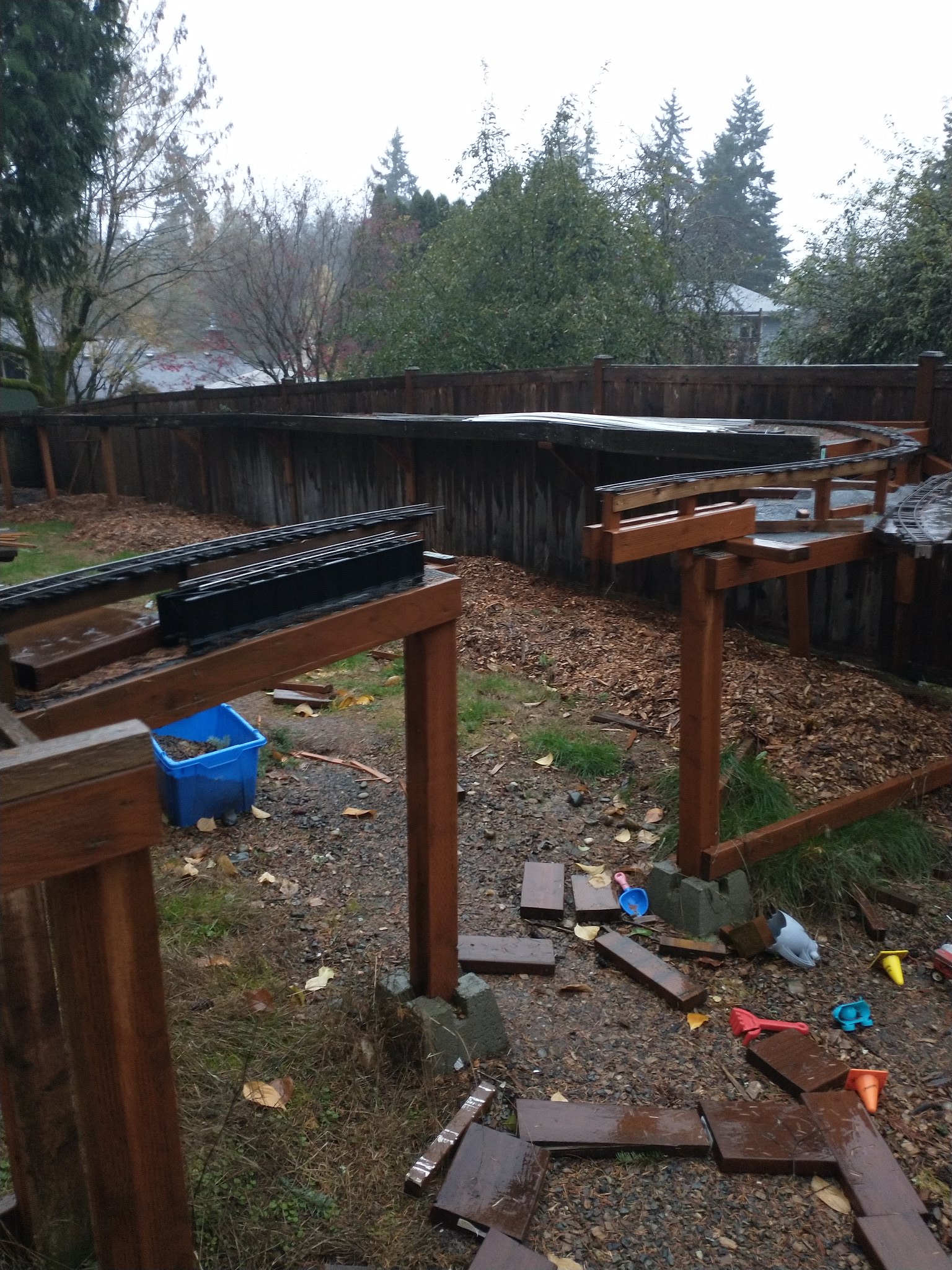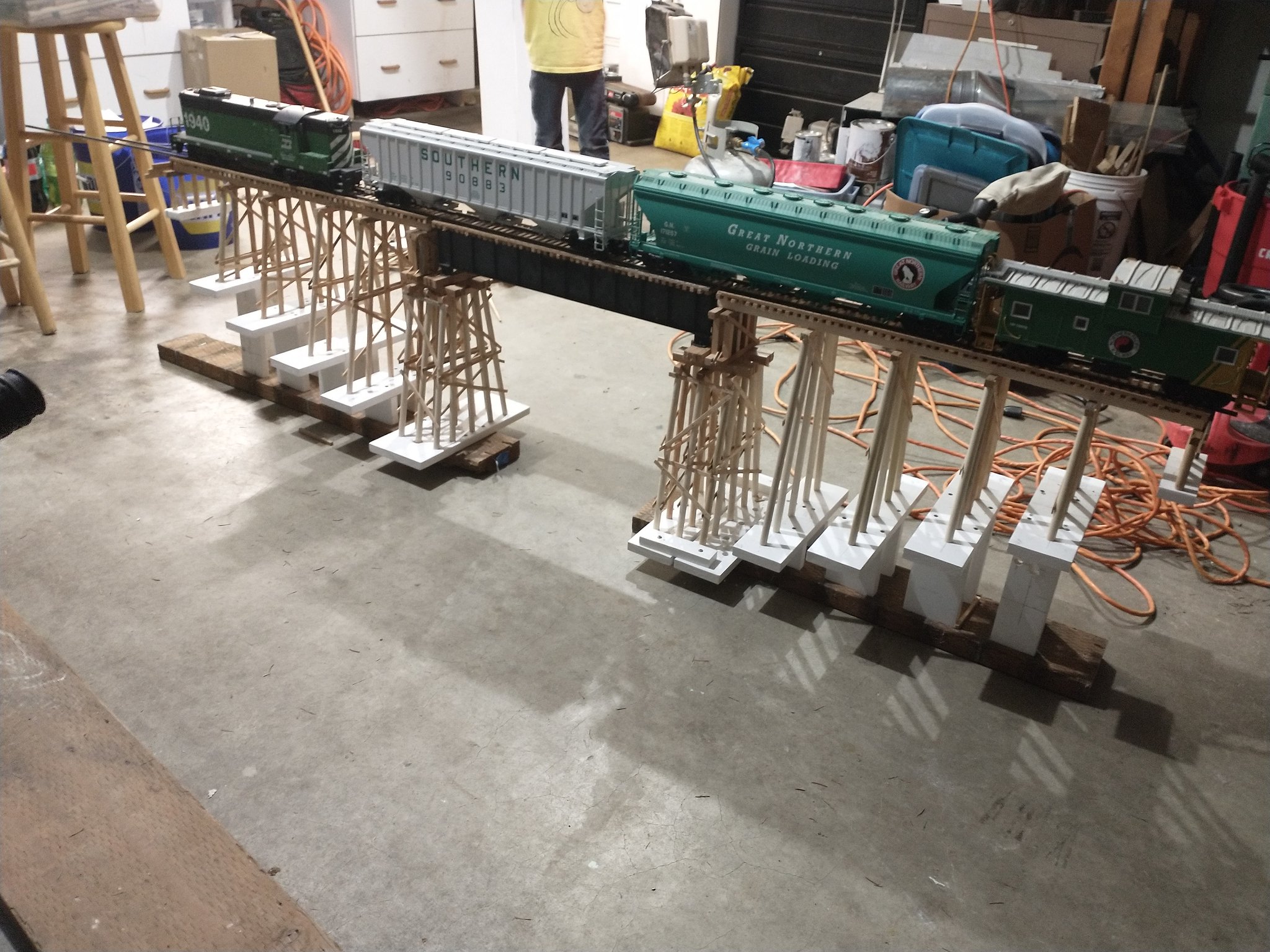Well since it’s almost midnight and I’m wide awake with insomnia, I figured now was the time to post my build log about my trestle the Devon mentioned in my MIK build.
One of the more recognizable scenes in the area I’m modeling is the bridge over the Sammamish slough (it connects Lake Sammamish with Lake Washington). The railroad crosses over the slough or runs parallel to it quite a bit in various spots.
The bridge over the slough in Redmond is a combination of a deck girder bridge and a pile trestle for a total span of 272’. Perfect for a model railroad sized bridge with 5 sets of bents on either side of the deck girder.






